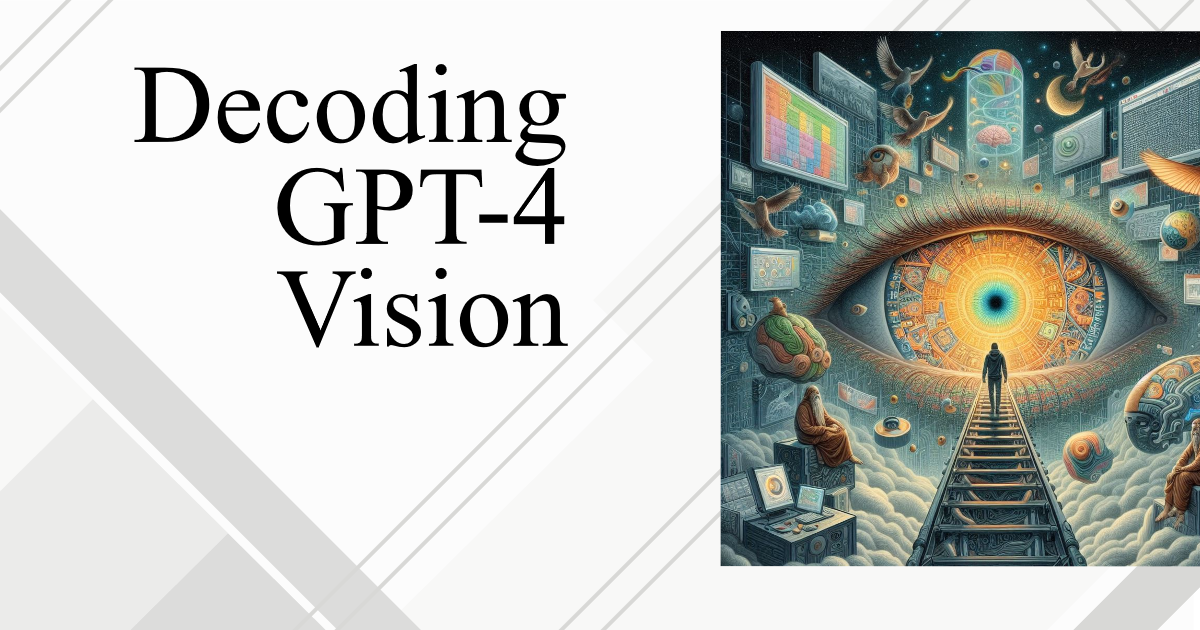
Introduction
In the ever-evolving landscape of artificial intelligence, OpenAI’s GPT-4 Vision emerges as a groundbreaking leap. This multimodal model combines image, text, and audio inputs, opening new avenues for interaction. Whether you’re deciphering ancient manuscripts or analyzing old pamphlets, GPT-4 Vision simplifies the process. In this article, we delve into the underlying technology, limitations, and practical applications of GPT-4 Vision.
What is GPT-4 Vision?
GPT-4 Vision (or GPT-4V) empowers users to instruct the AI model to analyze image inputs. By incorporating additional modalities—such as images—into large language models (LLMs), OpenAI bridges the gap between text and visual content. Imagine unraveling the secrets of handwritten manuscripts or extracting meaning from faded book pages—all with the assistance of GPT-4 Vision.
How It Works
- Image Analysis: GPT-4 Vision processes visual data, extracting relevant information and patterns.
- Natural Language Interaction: Users can ask questions about images, making the interaction intuitive and efficient.
- Speech Integration: GPT-4 Vision accepts speech as input, enhancing accessibility and usability.
Limitations
While GPT-4 Vision is a remarkable advancement, it’s essential to acknowledge its limitations:
- Complex Images: Extremely intricate or noisy images may pose challenges.
- Context Sensitivity: Contextual understanding relies on available data, which may not always capture nuances.
- Training Data: The model’s performance depends on the quality and diversity of training data.
Practical Applications
- Archival Research: Decode old manuscripts, historical documents, and faded prints.
- Education: Enhance learning materials by combining text and visual explanations.
- Content Creation: Generate image descriptions, alt text, and visual summaries.
Expanding the Horizon
The advent of GPT-4 Vision signifies a monumental shift in AI capabilities. Its ability to interpret and analyze images through the lens of AI is not just an incremental update—it’s a transformation that redefines the boundaries of machine learning.
Deep Dive into Technology
At its core, GPT-4 Vision leverages a sophisticated neural network trained on a diverse dataset encompassing various forms of visual media. This training allows the model to recognize patterns and details in images that would typically require human analysis.
Beyond the Visual: The Multimodal Experience
GPT-4 Vision’s multimodal approach does not stop at visual analysis. The integration of audio inputs allows for a richer, more dynamic interaction. Users can now speak directly to the model, asking questions and receiving information in real-time, making it an invaluable tool for visually impaired users.
The Future is Bright
As we continue to explore the capabilities of GPT-4 Vision, its potential applications seem limitless. From aiding researchers in uncovering historical insights to assisting graphic designers in creating compelling visuals, GPT-4 Vision stands at the forefront of AI innovation.
Conclusion
GPT-4 Vision is more than just a technological marvel; it’s a gateway to a new era of AI interaction. By understanding its capabilities and limitations, we can harness its power to unlock a world of possibilities. Stay tuned as we continue to explore this fascinating journey into the future of AI.

